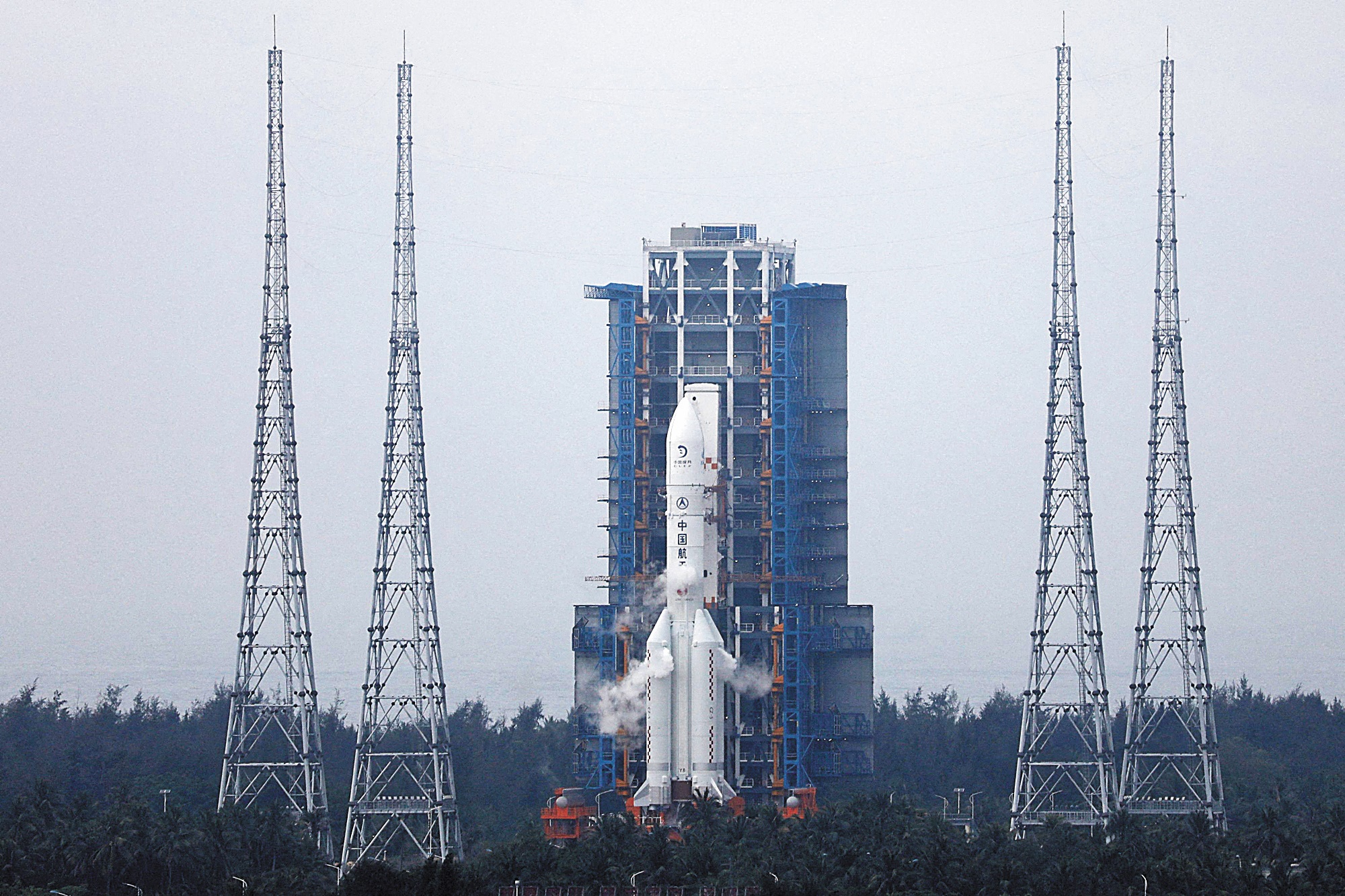There is a new space race, this time between the U.S. and China. On Tuesday, China took an important step forward.
A Chinese spacecraft touched down on grasslands in China’s Inner Mongolia region, carrying the first-ever rock samples from the far side of the moon. A scientific breakthrough in itself, the success also advanced China’s plan to put astronauts on the moon by 2030 and build a lunar base by 2035.
Such momentum is worrying American space officials and lawmakers, who have their own ambitions to build moon bases.
Unlike the original space race between the Americans and the Soviets, the goal of the U.S. and China isn’t just to make a short trip to the moon. It is to build permanent human outposts on its most strategic location, the lunar south pole. And as both nations gear up to build stations there one day, it is looking likely that tensions in orbit will mirror those on Earth.
Some U.S. officials fear China is planning a land grab. Chinese officials suspect the same of the Americans and are teaming up with Russia and other friendly nations for its south-pole outpost.
The outlines of a lunar iron curtain, in which rival superpowers and their allies jockey to exploit the moon’s strategic importance, are already emerging.
China advances
Tuesday’s successful completion of the Chang’e 6 mission shows that, by one measure, China is ahead for now. Its lunar program has now soft-landed on the moon four times since 2013, the latest mission scooping up rocks near the south pole with robotic arms.
Meanwhile, after a decadeslong moon-landing hiatus, two U.S. companies this year launched lunar-surface missions under NASA contracts. One lander tipped on its side after touching down. The other didn’t try to land because of technical problems. At least two more private missions, with funding from NASA, are slated to try to get to the moon later this year.
The recent moon-landing scoreboard is “4 to 0.5” in favor of China, said Simone Dell’Agnello, an Italian researcher who collaborated with Chang’e 6. “The first difference is that China has missions landing on the f—ing moon.”
All this is piling pressure upon the world’s most storied space agency. Through its Artemis exploration program, the National Aeronautics and Space Administration plans to conduct multiple landings in the coming years, develop a logistics station in lunar orbit and eventually build permanent camps on the moon’s surface.
But Artemis has faced repeated delays and cost overruns while relying on a complex mix of government workers and private contractors.
NASA completed an uncrewed test mission, Artemis I, around the moon in 2022. This year, it pushed back the next two flights, including Artemis III, which is to be humanity’s first crewed landing to the lunar surface since Apollo 17, in 1972.
NASA is working to improve the technology of a spacecraft’s heat shield, and collaborating with contractors, including Elon Musk’s SpaceX, which is developing a lunar lander for Artemis.
Some space experts say Artemis III’s new target date of 2026 is still too optimistic. NASA has been considering altering the plan for Artemis III, such that the mission wouldn’t include landing astronauts on the moon, according to people familiar with the matter.
Bill Nelson, NASA’s administrator, said in an interview that landing astronauts in 2026 is indeed possible, pointing to SpaceX’s work advancing the vehicle it will use for that operation. “A lot depends on SpaceX,” he said.
Space tensions build
The idea that the U.S. was in a race with China was amplified in 2017 when a leading Chinese scientist at the state-run Chinese Academy of Sciences explained in a television interview why China was going to the moon.
“The universe is like an ocean. The moon is the Diaoyu Islands and Mars is the Huangyan Island,” said Ye Peijian, using the Chinese names for disputed Pacific territories claimed by China—but also Japan, Taiwan and the Philippines.
Then in 2021, China and Russia signed an agreement to build a research base on the lunar south pole.
“My concern is if China got there first and suddenly said, ‘OK, this is our territory. You stay out,’” NASA’s Nelson told a congressional hearing in April.
At the hearing, Nelson said China’s territorial claims offer a warning of how China might behave. During a visit to the White House in 2015, Chinese leader Xi Jinping pledged that China wouldn’t militarize the South China Sea. But it has since built airfields and missile silos on islands claimed by the Philippines and other nations, insisting it has exclusive rights over the region.
Such behavior matters, Nelson said, because there may be only a few spots in the lunar south-pole region with the blend of resources needed for human outposts.
China’s Foreign Ministry has called Nelson’s remarks irresponsible, saying it is the U.S., not China, that threatens peace in outer space.
Uncharted territory
The current race will test legal norms in a way the original space race never did. A decades-old Outer Space Treaty signed by more than 100 countries, including the U.S. and China, generally precludes nations from making sovereign claims on the moon. But it doesn’t spell out what would happen if two countries tried to build a lunar base on the same spot.
Under the treaty, whoever builds a moon base could argue it is entitled to establish a 100-kilometer safety perimeter to protect its equipment, said Michelle Hanlon, executive director of the University of Mississippi’s Center for Air and Space Law.
“Whichever country leads the exploration of space, whether it is back to the moon or on to Mars, you basically get to set the rules of the road for how we operate,” Rep. Frank Lucas (R-Okla.), chairman of the House Science Committee, said in an interview.
In an attempt to supplement the Outer Space Treaty—and boost momentum for its lunar program—the U.S. in 2020 started recruiting countries to sign the Artemis Accords, an arrangement that establishes a newer framework for peaceful space exploration, including requiring countries to share information about their activities on the moon. More than 40 countries have signed up so far.
A nationalistic Chinese state-run newspaper at the time called the Artemis Accords a play for American “space hegemony.” China hasn’t signed the accords and has instead recruited 10 countries, including Russia, Pakistan and South Africa, as partners for its south-pole base, called the International Lunar Research
A nationalistic Chinese state-run newspaper at the time called the Artemis Accords a play for American “space hegemony.” China hasn’t signed the accords and has instead recruited 10 countries, including Russia, Pakistan and South Africa, as partners for its south-pole base, called the International Lunar Research Station.



